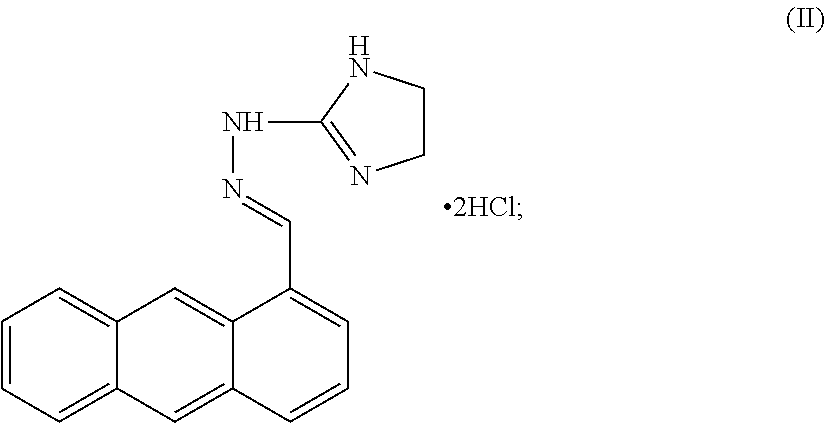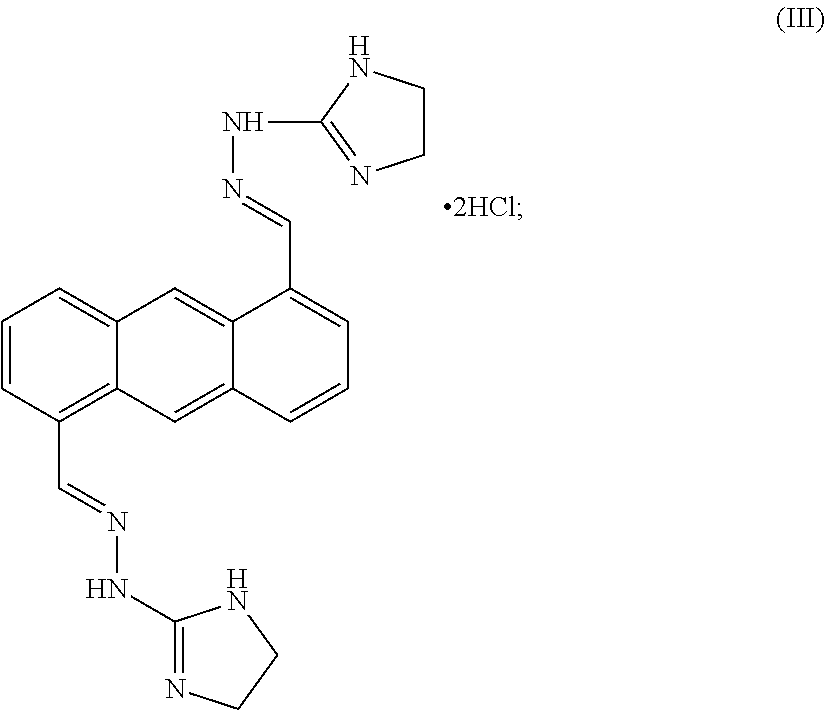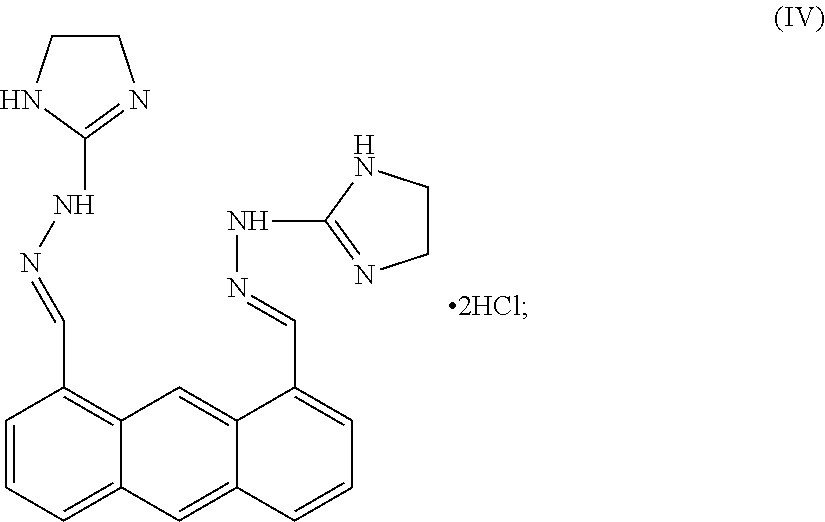Combinatorial methods to improve the therapeutic benefit of bisantrene and analogs and derivatives thereof
a technology of bisantrene and analogs, applied in the direction of biochemical equipment and processes, drug compositions, biocide, etc., can solve the problems of inability to meet many compounds that have successfully met preclinical testing and federal regulatory requirements for clinical evaluation were either unsuccessful or disappointing in human clinical trials, and chemical agents where in vitro and in vivo, so as to improve the utility of chemical agents with suboptimal performance, improve dose determination and schedul
- Summary
- Abstract
- Description
- Claims
- Application Information
AI Technical Summary
Benefits of technology
Problems solved by technology
Method used
Image
Examples
Embodiment Construction
[0107]Bisantrene is an unusual agent with direct cytotoxic action as well as genomic and immunologic methods of action. The chemical name for bisantrene is 9, 10-anthracenedicarboxaldehyde-bis [(4, 5-dihydro-1H-imidazole-2-yl) hydrazine] dihydrochloride, and it was originally classed as an anthracycline chemotherapeutic agent. These are drugs with planar structures based around a resonant aromatic ring structure that intercalates within the helices of DNA and disrupt various functions, including replication, presumably due to a strong inhibitory effect on the enzyme topoisomerase II. It was found that, like other anthracyclines, it could kill tumor cells in clonogenic assays and intercalate with DNA, where it inhibits both DNA and RNA synthesis. The primary chemo-therapeutic mechanism for bisantrene is its preferential binding to A-T rich regions where it effects changes to supercoiling and initiates strand breaks in association with DNA associated proteins. This results from the in...
PUM
 Login to View More
Login to View More Abstract
Description
Claims
Application Information
 Login to View More
Login to View More - R&D
- Intellectual Property
- Life Sciences
- Materials
- Tech Scout
- Unparalleled Data Quality
- Higher Quality Content
- 60% Fewer Hallucinations
Browse by: Latest US Patents, China's latest patents, Technical Efficacy Thesaurus, Application Domain, Technology Topic, Popular Technical Reports.
© 2025 PatSnap. All rights reserved.Legal|Privacy policy|Modern Slavery Act Transparency Statement|Sitemap|About US| Contact US: help@patsnap.com



